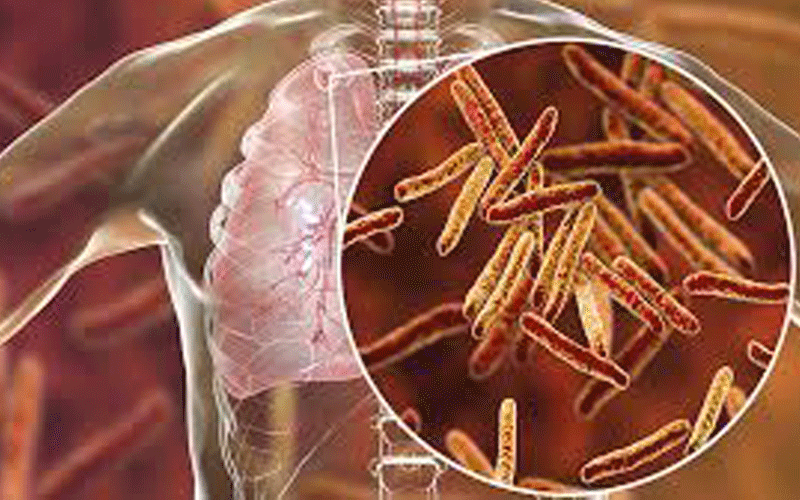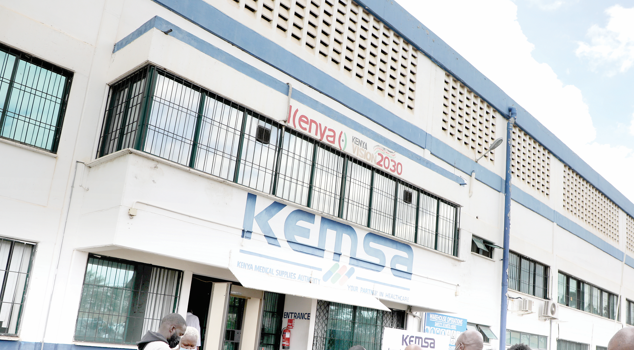Hidden casualties of tuberculosis disease

Evelyn Makena and Sandra Wekesa
Eleven years ago, when Catherine Nerima was nursing her seven-month-old firstborn child, she visited a clinic in Nairobi to get treatment for what she thought was a common cold.
She had been experiencing a persistent cough for weeks before she sought medical attention in March 2009.
The doctor prescribed a strong expectorant, but still the cough did not subside.
As she was undergoing treatment, her baby, Kofi Meshack Wandera, also started having similar symptoms.
A month after the initial visit to the clinic, Nerima was advised by the doctor to have a chest x-ray, which revealed she had tuberculosis (TB).
“When I got the results, I immediately got worried about the possibility of having infected my baby. He was still breastfeeding at the time,” she explains.
With tests results out, she immediately began her treatment at Kangemi Health Centre in her neighbourhood.
While undergoing treatment that entailed taking daily pills for the following six months, Nerima informed nurses about the persistent cough her son was having and whether he was likely to have been infected with TB.
“The nurses quickly dismissed me, saying it was not possible that my child had TB. Even without conducting any tests, they speculated he was suffering from asthma,” she says.
Despite going to several hospitals and getting different drugs, her son’s cough persisted. “He was so weak, and I was getting desperate.
At the same time, I was dealing with strong side-effects of the TB drugs, which mostly left me feeling fatigued,” she explains.
Nerima, who was working as a cleaner at University of Nairobi at the time, had to resign from her job to focus on her treatment and nursing her son.
“My work would regularly get disrupted by my son’s medical emergencies. Besides, I had to excuse myself from work every Tuesday morning to get my weekly supply of drugs from the clinic.
It became exhausting,” she adds. Two months after beginning treatment, her son got a proper diagnosis at Kenyatta National Hospital (KNH).
Kofi fell so ill one day and upon being rushed to KNH, he was diagnosed with pneumonia and was admitted in critical condition.
For the three weeks he was admitted at the hospital, doctors treated him for pneumonia.
However, on the day of being discharged, he underwent an X-ray that showed he had pulmonary TB.
The case is the same for Elizabeth Mueni, the mother of Mercy Mutheu,12, who had been diagnosed with pulmonary TB at Makueni Referral Hospital.
Mutheu’s treatment entails taking two sets of medication, taking nutritious foods and walking 7km every Monday to get refills.
Her health started deteriorating in October last year, and in a span of two weeks, she had lost 10kgs.
Mueni took her to the clinic in her village in Ukia, but Mutheu did not improve, and a trip to a different hospital in Makueni did not help.
All along, no one had been testing Mutheu for anything serious and it was becoming expensive for Mueni as she had to make arrangements for transport. “It drained me.
That I was not able to provide adequately for my child was hurting me, especially since she was getting worse by day,” Mueni says.
Outlined roadmap
The trip to Makueni Referral Hospital turned things around as Mutheu received proper diagnosis and started receiving treatment for TB.
It also forced Mueni to interrogate some beliefs about the disease she had.
“Since the bacteria had been hiding for a period of over two months, my next step was to take everyone in the house for check up because I didn’t want any more problems than the one I had,” the mother of three says, explaining how shocking it was for her to learn that TB could affect a perfectly healthy child who didn’t, at any point, have any medical issue that could cause such an exposure.
Kofi and Mutheu are among dozens of children globally who suffer from TB every year.
An estimated 1.1 million children under 15 years fell ill with TB in 2018, and 230,000 of them died, according to World Health Organisation (WHO).
Just like in the case of Kofi and Mutheu, TB detection in children is low, leading to delayed diagnosis, non-diagnosis and unavoidable deaths.
Until 2013, the global approach in tackling TB mainly focused on preventing transmission between adults.
Then the WHO introduced the first ever strategy focused on ending childhood TB, a situation the global agency referred to as the “hidden epidemic”.
The roadmap outlined 10 steps, including adding the needs of children in research and policy development.
It recommended allocation of funding to programmes tackling TB in children, improving data collection and training healthcare workers on childhood TB.
Years after the roadmap was launched, challenges still exist in tracing TB in children.
Timothy Wafula, programme manager, health governance programme at Kenya Legal and Ethical Issues Network (Kelin), says TB is often overlooked or misdiagnosed due to difficulties in obtaining sputum in children.
An airborne infectious disease, TB is tested through sputum specimens of the patients or a chest x-ray.
Caused by a bacterium Mycobacterium tuberculosis, TB can be spread by air through coughing or sneezing.
Wafula adds lack of information among communities puts children
at risk. “Usually communities do not have the right information on how TB manifests in children.
When parents take their sick children to a health facility, they may withhold information that could be helpful in diagnosing the children,” he explains.
According to WHO, symptoms of childhood pulmonary TB include, persistent cough, weight loss, fever or night sweats and reduced playfulness
Similarly, health professionals sometimes expose children to the disease by failing to educate infected mothers on the necessary precautions to take.
As a precautionary measure, infected mothers are advised not to breastfeed their babies or be in direct contact with them until they start taking TB medication and are no longer infectious.
“If that information is not shared with a mother then that puts other people at risk. This is some sort of negligence,” he says, adding that it is the right of every TB patient to access prevention, diagnosis, treatment, care and support service.
Kelin, an organisation that promotes human rights of TB and HIV patients, works with communities to educate them about the diseases and the necessary response.
Joseph Mulei, a doctor in Makueni says Tuberculosis in children is a difficult disease to treat, because unlike in adults, children don’t show any symptoms.
Vital advice
“Most doctors, therefore, seek alternatives including skin tests—mainly an X-ray or a blood test called interferon-gamma release assays (IGRA),” he explains.
They also resort to inquiring about the child’s history, asking whether a child has been exposed to someone who is coughing, if the child has symptoms of HIV/Aids and if there are any recorded weight loss, fever and even poor appetite.
Another challenge is that most caregivers, especially in the rural areas, find it hard to access facilities because it automatically means walking for longer distances. Lack of awareness also contributes to cases.
Dr Mulei, however, believes that with the new child-friendly medications, TB patients then get healed and will not even need to worry about it anymore, “Initially, paediatric TB was hard to treat, but the new children friendly medication is beneficial,” he says.
Nerima and her son recovered fully after each undergoing a six-month treatment regimen.
The 36-year-old mother of three advises infected mothers to take precautions to protect their children.
“Maintain good hygiene at home, keep the house properly ventilated, air beddings regularly and cover your mouth while coughing,” she says.
Although her daughter is doing fine and still on medication, Mueni urges the government to train health workers in rural areas, especially the ones that give wrong diagnosis as this misinformation could result to death.















